What Makes White Hydrangeas Turn Pink? Tips & Insights
If you’ve ever noticed your white hydrangeas turning pink, you might wonder what’s going on in your garden. White hydrangeas don’t change color due to soil pH like blue or pink varieties. Instead, this change is often due to another factor entirely.
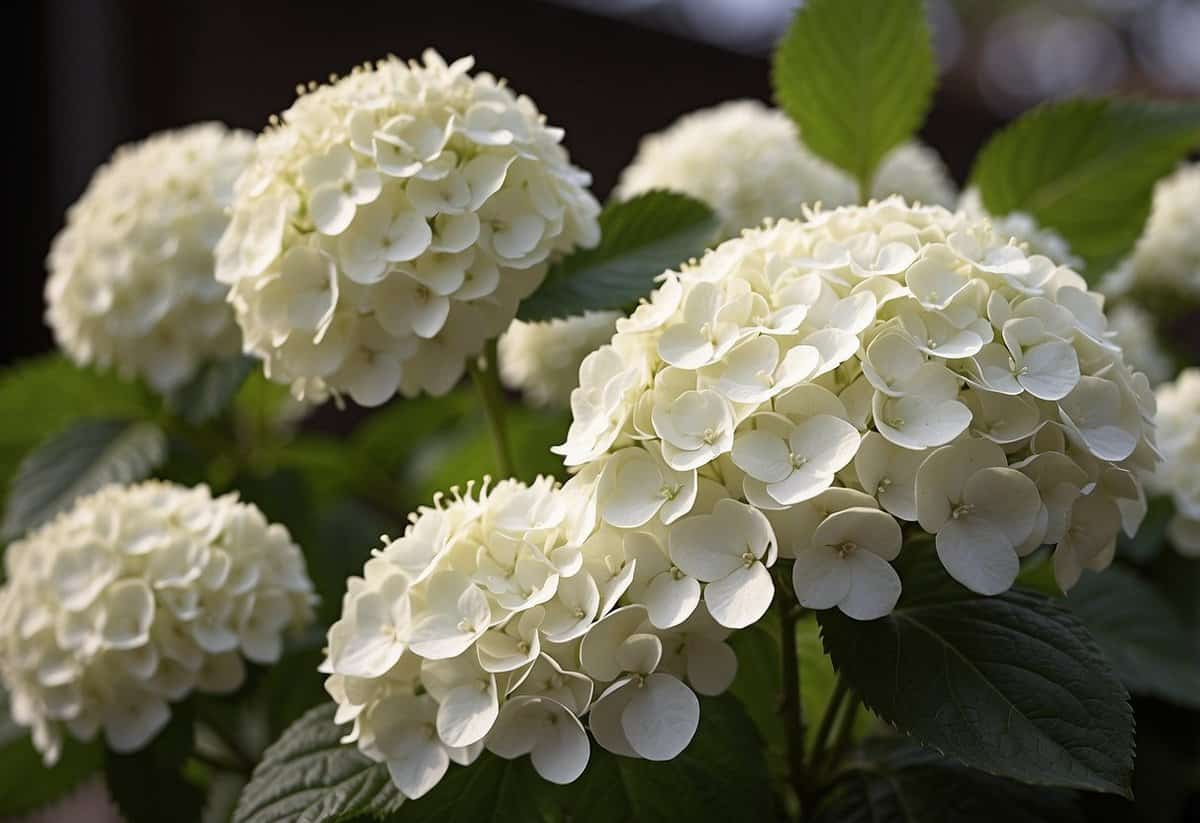
Most likely, you’ve accidentally planted a variety that naturally shifts to pink or blue as it matures. You might think your soil is to blame, but white hydrangeas’ color shifts are more connected to genetics than the environment.
Keeping your blooms white involves focusing on plant health, including the right amount of water, light, and fertilizer. For tips on maintaining those beautiful white blooms, you can follow some simple guidelines to ensure your garden stays vibrant and true to your vision.
Understanding Hydrangea Colors

Hydrangea colors are influenced mainly by the pH level of the soil. This determines whether your hydrangea blooms will be blue, pink, or another shade. White hydrangeas, however, do not change color as easily and require different methods to influence their color.
The Science Behind Hydrangea Color Variation
Hydrangea flowers can change color due to the pH of the soil. If the soil is acidic (pH 5.5 or lower), the blooms will turn blue. In alkaline soil (pH 6.0-6.2), the flowers are more likely to be pink.
Adding garden lime can raise the soil’s pH, resulting in pink blooms. Conversely, adding aluminum sulfate will lower the pH, producing blue flowers. Purple blooms can appear when the soil pH is in between these ranges, around 5.5 to 6.5.
Understanding this process helps you cultivate the specific flower color you desire. The soil’s composition, including the presence of aluminum, also plays a crucial role in this color change. By managing the soil’s pH, you can enjoy the colorful variety of hydrangeas in your garden.
White Hydrangeas: A Unique Case
White hydrangeas are different. Unlike other colors, they do not change hue based on soil pH. White blooms are consistent and won’t turn blue, pink, or purple naturally.
To influence color in white hydrangeas, the process is more involved. Changes are not guaranteed and often require specific care and alterations to soil chemistry. Some gardeners have noted slight changes by adjusting soil components, but these results are typically subtle.
White hydrangeas add a classic touch to gardens, offering consistent beauty without the variable color changes seen in blue, pink, or purple varieties. Though challenging, experimenting with soil treatments might introduce a hint of color to these unique blooms.
Soil pH and Its Impact
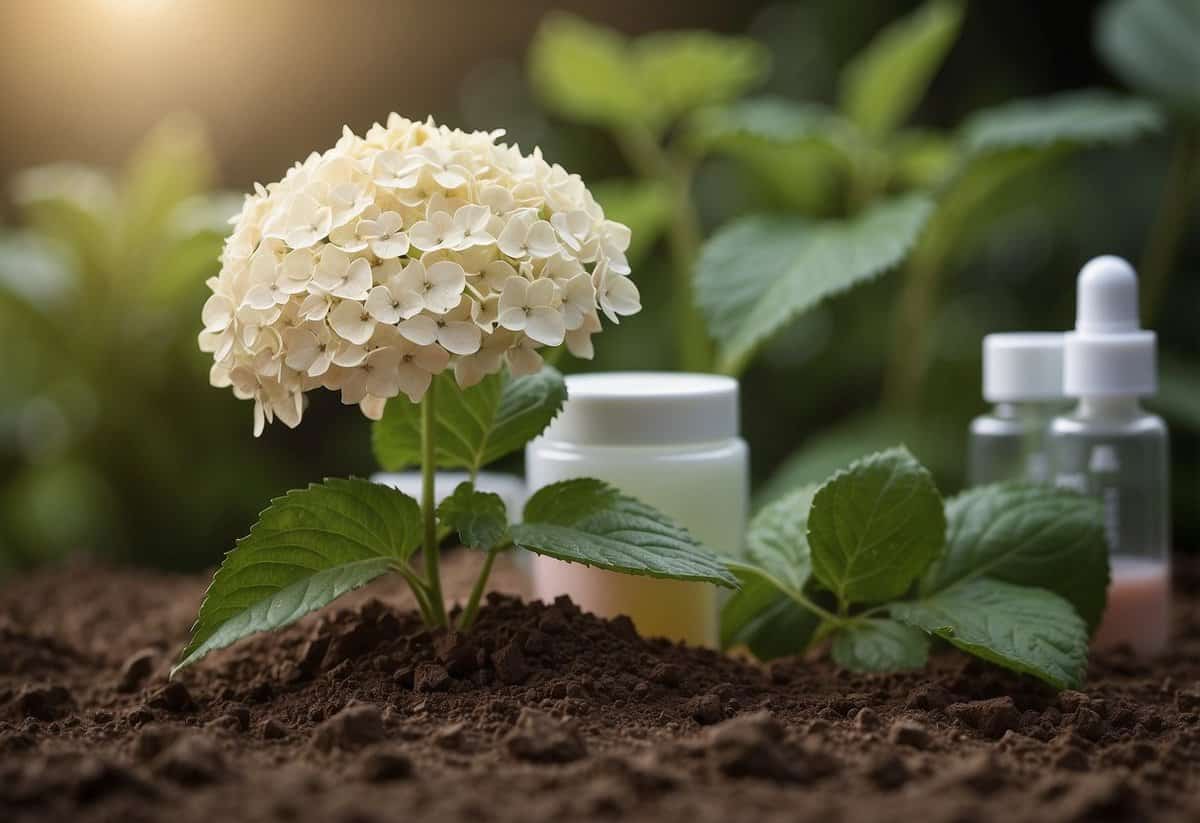
White hydrangeas turning pink can be influenced by the pH level of the soil they are grown in. By understanding how soil pH affects hydrangea colors and learning how to test and adjust it, you can maintain the desired bloom colors in your garden.
How Soil pH Affects Hydrangea Colors
Soil pH plays a crucial role in determining the color of hydrangea blooms. For hydrangeas, pH levels can either enhance or change the color of their flowers. In acidic soil (pH below 7), hydrangeas tend to have blue or purple flowers. When the soil is more alkaline (pH above 7), you are more likely to see pink or red blooms.
For white hydrangeas, the soil pH alone doesn’t directly change their color since they typically maintain their white hue without much variation. If your white hydrangeas are turning pink, this generally means that you might not have a true white variety. The soil’s alkalinity could be interacting with the plant’s genetics, causing it to take on a pink shade due to the higher pH levels.
Testing and Adjusting Soil pH
Testing your soil’s pH is a simple process and is necessary to understand its current state. Use a soil test kit, which you can find at most garden centers. Take a sample of your soil and follow the instructions on the kit to measure its pH level.
Once you know your soil pH, you can make adjustments if needed. To increase the pH and make the soil more alkaline, you can add garden lime. For a decrease in pH, making the soil more acidic, sulfur or aluminum sulfate can be applied. It’s important to follow the recommendations on how much to add, as overapplication can harm your plants.
Regularly testing and adjusting your soil pH ensures that your hydrangeas can achieve and maintain their intended colors. Different soil amendments may need to be reapplied periodically to maintain the right pH level for your garden.
Modifying Soil Composition
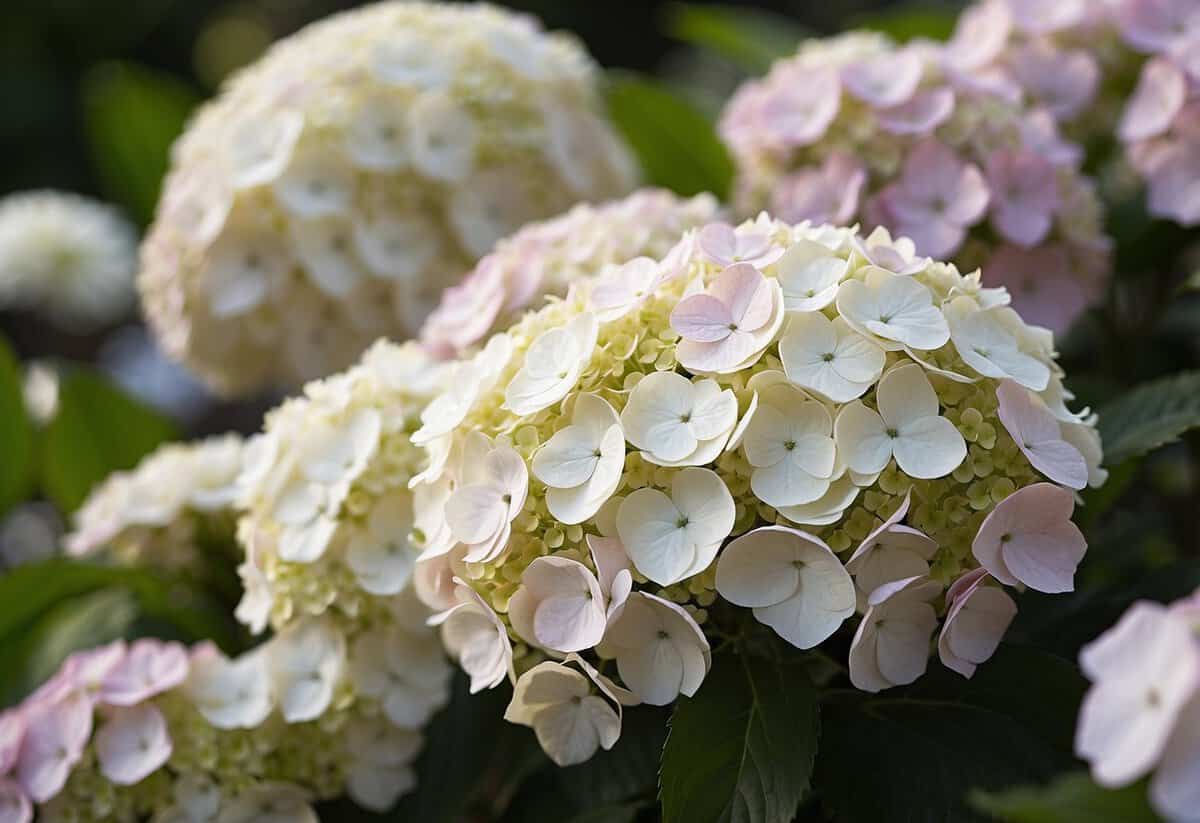
Adjusting the soil’s acidity is key to changing the color of your hydrangeas. Whether you want vibrant pink or deep blue blooms, tweaking the pH level of your soil can make a big difference.
Altering Acidity for Desired Bloom Colors
To turn your white hydrangeas pink, you need to raise the soil’s pH to make it more alkaline. Hydrangeas bloom pink when the soil pH is around 6.0 to 6.2. You can test your soil’s pH using a simple soil test kit.
Adding garden lime to your soil can help increase the pH. Spread the lime around the base of the plant and gently work it into the soil. Avoid using aluminum sulfate, which is used for blue blooms, as it makes the soil more acidic. Coffee grounds, another common garden amendment, also acidify the soil and are better avoided if you want pink flowers.
Ingredients for Adjusting Soil Acidity
To increase soil alkalinity and promote pink blooms, use products like garden lime or baking soda. Garden lime is available in both powder and pellet form. Sprinkle it around the plant and water it in well. Baking soda can also help but must be used carefully because it can burn plant roots. Mix a tablespoon in a gallon of water and apply it to the soil.
Another option is to add organic matter such as compost, which can slightly raise pH over time. Avoid ingredients like vinegar or aluminum sulfate since they acidify the soil and lead to blue blooms instead. Keep the soil well-drained and, if possible, use mulch to retain moisture without altering the pH drastically.
By following these steps, you can create the perfect conditions for your hydrangeas to display beautiful pink flowers.
Fertilization and Nutrition
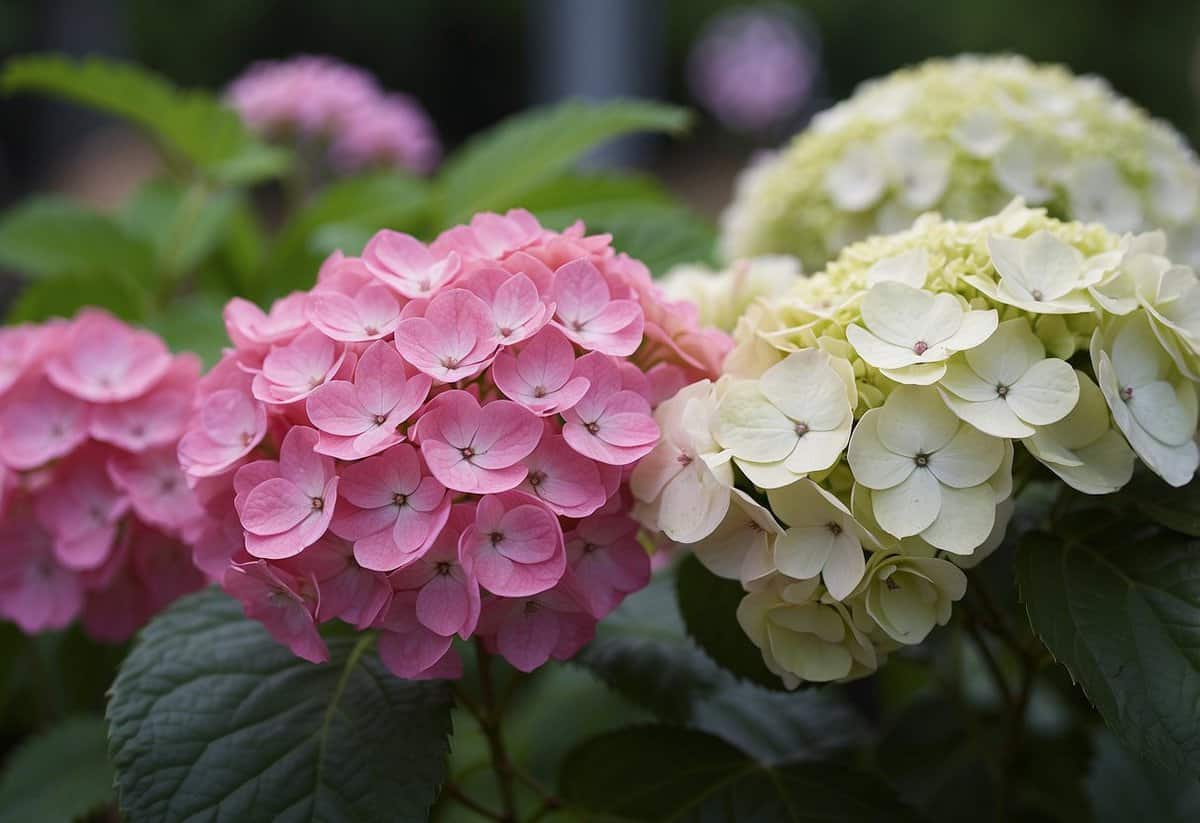
Fertilization and soil nutrition significantly affect hydrangea color. Proper care can keep your white hydrangeas looking vibrant and healthy.
Choosing the Right Fertilizer
Selecting the appropriate fertilizer is key to maintaining the color of your hydrangeas. Balanced fertilizers with equal parts nitrogen, phosphorus, and potassium (such as 10-10-10) work well for these plants. These nutrients support healthy growth without altering the flower color.
Organic methods like compost can also be beneficial. Compost adds essential nutrients to the soil, improving plant health. You can pick up fertilizers and compost at garden centers. For white hydrangeas specifically, avoid fertilizers with high phosphorus levels. Phosphorus changes the soil environment and can influence flower color.
Nutrients That Influence Hydrangea Color
The nutrients in your soil have a direct impact on hydrangea color. For example, a high pH level (above 7.0) can lead to pink or purple blooms. Keep the pH lower to maintain white blooms by avoiding substances that raise pH, like garden lime.
Conversely, aluminum in the soil can turn hydrangea blooms blue, affecting white varieties. If you want to keep your white hydrangeas white, you should avoid using aluminum sulfate. Keeping a balanced nutrient profile with necessary elements like nitrogen and potassium is crucial. Testing your soil regularly can help in making the right adjustments.
Caring for Hydrangeas
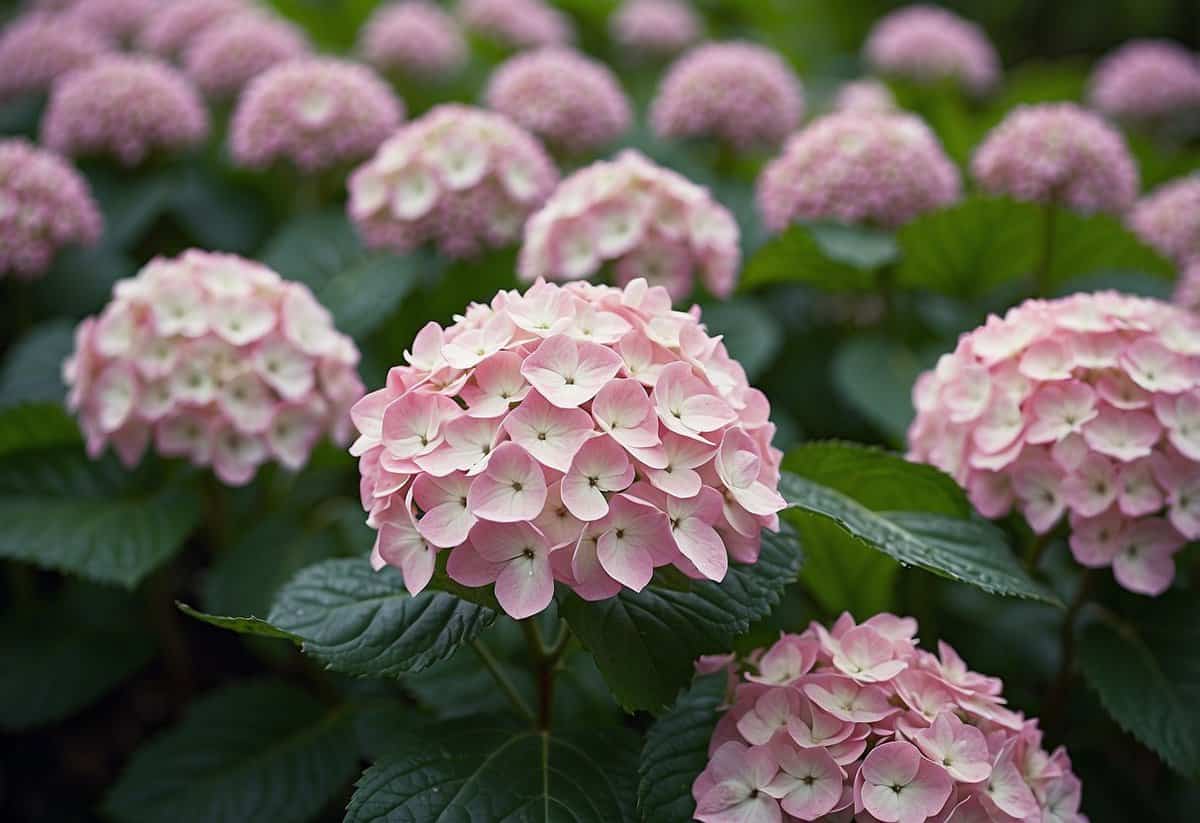
Proper care for hydrangeas involves aspects like watering, sunlight, and maintaining color. These essential factors help to keep your hydrangeas vibrant and healthy.
Watering and Sunlight Tips
Hydrangeas need consistent moisture to thrive. Water them deeply at least twice a week. If you grow them in containers, they may need water more often. Always ensure the soil around your plants is kept moist, but avoid waterlogging, as this can lead to root rot.
Sunlight plays a key role in hydrangea care. These flowering shrubs prefer morning sun and afternoon shade. Too much direct sunlight can scorch the leaves and blooms. If you live in a hot climate, choose a spot with filtered sunlight or partial shade to protect your hydrangeas.
Maintaining Color Year After Year
Maintaining the color of your hydrangeas involves adjusting the soil pH. For white hydrangeas, you don’t need to change the soil’s acidity as they don’t alter color with pH variation. Blue and pink hydrangeas, however, can change color based on soil conditions.
If you want to keep pink hydrangeas pink, raise the soil pH by adding garden lime. Follow the directions on the product packaging to achieve the desired effect. Regularly checking and amending the soil can help maintain their color year after year.
Patience and regular care are crucial. Visit your local nursery for specific fertilizers and pH adjusting materials. With the right attention, your hydrangeas will be a beautiful addition to your garden year after year.







